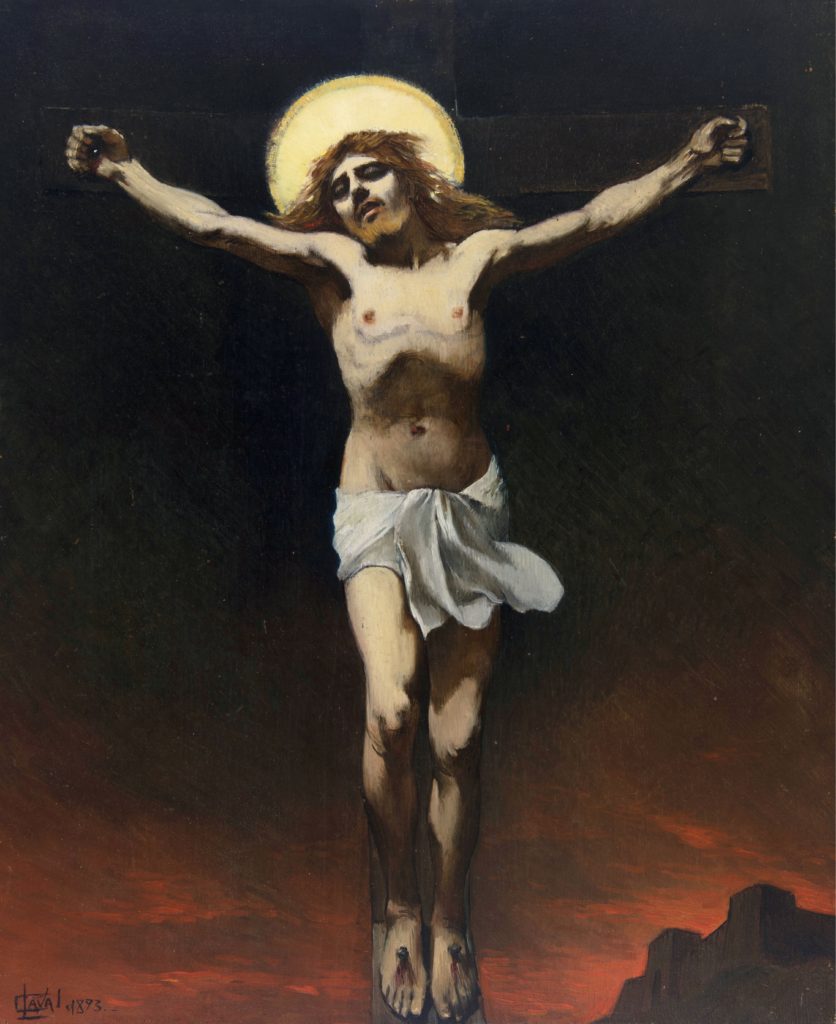The present and so-entitled Le Christ noir is certainly one of the most dramatic and key works by Charles Laval, at the end of his life, that occurred a year later. In a way, this sets Laval’s testament, encapsulating his singular personality, as well as an homage to his master, Léon Bonnat, and to his friend, Paul Gauguin.
Today, the name of Charles Laval remains mainly famous among the specialists of the 19th century art, although his key role and influence, along with his friend Gauguin, was predominant at the early stage of the Synthetism. The Van Gogh museum is besides preparing an exhibition about Laval’s early works. The young man had first studied in the studio of Léon Bonnat, and later with Fernand Cormon, with whom Van Gogh himself also learned his métier. In 1886, Laval travelled to Pont-Aven with Ferdinand du Puigaudeau, and met Gauguin at the Pension Gloanec. They decided to look for inspiration overseas, travelling together to Panama and Martinique in 1887, and producing a new approach, the Synthetism. Following diseases, Laval came back to Brittany in June 1888, a few months after Gauguin. In June 1889 he exhibited ten works at the founding exhibition at the Café Volpini in Paris. He then moved to Cairo in late 1890, trying to recover his health, but he died there in 1894, at the age of thirty-two. Up to date, the oeuvre of the artist counts only thirty works, paintings and drawings together. After his death, his brother Nino sold the studio, some works disappeared, a few were a long time even attributed to Gauguin.
When Laval and Gauguin were in Panama, they met their forthcoming friend and sponsor Albert Dauprat, a banker associated with the Panama Canal. Dauprat was an instrumental figure when considering Laval. He stored Laval’s paintings at the return from Martinique, he financially supported him, and he welcomed him in 1893 during Laval’s break-disease in his Château de Breuil, close to Anjou. In return, Laval painted for the chapel a Christ on the cross, for which two versions have been made, the present one, and the other so-entitled Le Christ jaune. The two paintings stayed in Dauprat’s family until they rediscovery in 1984. Art historians were eager to locate The Black Christ as it is the first recorded work illustrating the “manière sombre [“dark manner”] that Emile Bernard mentioned in his memoir, about Laval. The so-called dark manner described by Bernard appears in the artist’s last years, and it did show the impact of his first teacher, Léon Bonnat. The Black Christ is clearly a modern variation of the famous and large Bonnat’s Christ, of 1874, kept at the Musée du Petit Palais in Paris. Laval did not follow Bonnat’s realism, and he achieved a more symbolist atmosphere. The sunset at the horizon has become dramatically red. Laval also added a gust of wind, that blows the Christ’s hair and linen cloth. Furthermore, Laval represented an almost invisible cross, creating an effect of a figure in levitation. If Bonnat’s painting is still and calm, Laval’s work seems to announce a tempest.
Here, Christ is somehow portrayed as his friend Gauguin, with his iconic red hair. Nabi artists has often mixed portraits of friends with religious figures, such as Gauguin’s self-portrait as a Christ, the Christ in the Garden of Olives of 1889 (Norton Museum of Art). This Laval’s last composition was a powerful tribute to Gauguin, while illustrating the passage between life, death and redemption. It is also a key and early work warning forthcoming transformations of the Synthetism art by some artists, like Maurice Denis, Emile Bernard, to an art with profound religious contents.






